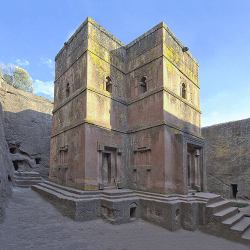Nineveh’s history spans thousands of years, tracing back to its foundations as an early settlement in Mesopotamia. From its modest beginnings, it evolved into the formidable capital of the Assyrian Empire, embodying the might, culture, and architectural achievements of ancient Assyria.
Origins and Early History of Nineveh
The earliest evidence of settlement at Nineveh dates to around 6000 BC. Its position along the Tigris River and proximity to major trade routes contributed to its growth and prosperity. Initially a religious center dedicated to Ishtar, the goddess of love and war, Nineveh grew in significance under various Assyrian kings as they expanded their influence across Mesopotamia.
Throughout the centuries, Assyrian rulers invested in making Nineveh not only a religious center but a vital political and cultural hub. By the late 2nd millennium BC, the city had become a stronghold of Assyrian power and influence.
Sennacherib and the Golden Age of Nineveh
Nineveh’s peak came during the reign of Sennacherib (705–681 BC), who embarked on an ambitious program to transform it into a city that would exemplify the glory of Assyria. Sennacherib was not only a powerful ruler but also an innovator, overseeing the construction of what was then the largest and most sophisticated city in the world.
Among his most remarkable achievements was the construction of the “Palace Without Rival,” a sprawling complex filled with intricate relief carvings depicting the king’s victories, hunting expeditions, and homage to the gods. These reliefs remain some of the finest examples of Assyrian art, displaying both technical skill and storytelling.
Sennacherib also developed an advanced water management system for Nineveh, constructing an extensive network of canals, aqueducts, and cisterns to bring water from distant mountains to the city. This irrigation system sustained not only the city’s population but also its renowned gardens. According to some scholars, these gardens might have inspired the legend of the Hanging Gardens, often attributed to Babylon but possibly rooted in the splendor of Nineveh.
Library of Ashurbanipal
The reign of Ashurbanipal (668–627 BC) further cemented Nineveh’s place in history, particularly through his collection of texts that formed the first-known library in the world. Ashurbanipal, unlike many rulers of his time, was literate and deeply interested in learning. He ordered scribes to copy and collect texts from across Mesopotamia, creating a repository of knowledge that preserved literature, religion, science, and law.
The Library of Ashurbanipal contained thousands of clay tablets inscribed with cuneiform script, covering subjects like astronomy, medicine, and mythology. Perhaps its most famous text is the Epic of Gilgamesh, one of humanity’s earliest literary works, offering timeless insights into themes of heroism, friendship, and the quest for immortality. The library’s discovery has been crucial to understanding Mesopotamian culture, providing a rare window into the life and worldview of ancient Assyria.
Nineveh’s Military Power and Cultural Influence
Nineveh was not only a city of culture and knowledge but also a formidable military power. Assyrian kings launched numerous campaigns from Nineveh, expanding their empire across the Near East, from Egypt to the Persian Gulf. Assyrian armies were known for their efficiency, use of iron weaponry, and innovative siege techniques, making them nearly unbeatable for centuries.
Through these conquests, Nineveh became a melting pot of cultures, ideas, and technologies. The city’s artisans incorporated influences from conquered regions, while Assyrian religious practices, art, and governance were shared across the empire.
The Fall of Nineveh: End of an Era
Nineveh’s supremacy, however, was not destined to last. By the late 7th century BC, Assyria had overextended itself, facing internal struggles and mounting opposition from outside forces. A coalition of Babylonians, Medes, and Scythians formed an alliance to overthrow the once-dominant empire. In 612 BC, they mounted a decisive siege on Nineveh, marking one of the most significant events in ancient Mesopotamian history.
After months of intense fighting, the walls of Nineveh were breached, and the city was sacked and destroyed. This defeat signified not only the end of Nineveh but also the fall of the Assyrian Empire itself. Babylon, under the leadership of Nabopolassar and his successors, rose to prominence, beginning a new chapter in Mesopotamian history.

Nineveh lay in ruins for centuries, with its existence largely forgotten until archaeological excavations in the 19th century uncovered the city’s treasures. British archaeologist Sir Austen Henry Layard was among the first to explore Nineveh’s ruins, unearthing the remains of Sennacherib’s palace, the Library of Ashurbanipal, and monumental sculptures, including the famous winged bulls, or lamassu, that guarded the gates of Assyrian palaces.
These discoveries have given historians invaluable insights into Assyrian art, religion, and daily life. Today, many artifacts from Nineveh are housed in museums around the world, including the British Museum in London and the Louvre in Paris, where they continue to captivate visitors and underscore the city’s historical significance.
Nineveh in Modern Times
Despite its ancient destruction, Nineveh’s legacy endures. The modern city of Mosul, located across the Tigris, bears testament to Nineveh’s enduring influence on the region. Recently, efforts have been made to preserve and protect the remaining ruins of Nineveh, though conflict and looting have posed significant challenges. International organizations are working with local authorities to safeguard the site, recognizing its irreplaceable cultural and historical value.
Nineveh’s Place in World History
Nineveh represents the heights of ancient Assyrian civilization, capturing the power, ambition, and creativity of one of history’s most influential empires. From its towering walls and monumental palaces to the vast knowledge preserved in Ashurbanipal’s library, Nineveh’s contributions to architecture, art, and scholarship continue to resonate. Its dramatic rise and fall serve as a powerful reminder of the impermanence of empires, but its legacy lives on, offering modern generations a glimpse into the rich tapestry of ancient Mesopotamian life.
Frequently Asked Questions
- Why was Nineveh significant in ancient history?
Nineveh was the capital of the Assyrian Empire and one of the most populous cities in the world at its peak. It was a center for culture, architecture, and military might, featuring advanced infrastructure and the renowned Library of Ashurbanipal. - What caused the fall of Nineveh?
Nineveh fell in 612 BC after a coalition of Babylonians, Medes, and Scythians besieged and destroyed it. This marked the end of the Assyrian Empire, which had become overextended and weakened by internal and external pressures. - What was found in the Library of Ashurbanipal?
The library contained thousands of cuneiform tablets on subjects like literature, law, medicine, and mythology. Notably, it housed the Epic of Gilgamesh, one of the oldest known literary works. - What innovations did Sennacherib bring to Nineveh?
Sennacherib constructed an advanced irrigation system, a massive palace, and possibly gardens that inspired the legend of the Hanging Gardens. His reign transformed Nineveh into a model of urban and architectural sophistication. - What role did Nineveh play in the Assyrian Empire?
Nineveh was not only the political and administrative capital but also a military and cultural hub from which Assyrian rulers launched campaigns and influenced other regions. - What is the status of Nineveh’s ruins today?
Many of Nineveh’s ancient artifacts have been preserved in museums worldwide. However, the site itself faces challenges, including preservation concerns and damage from modern conflicts. Efforts are ongoing to protect what remains of this ancient city.










